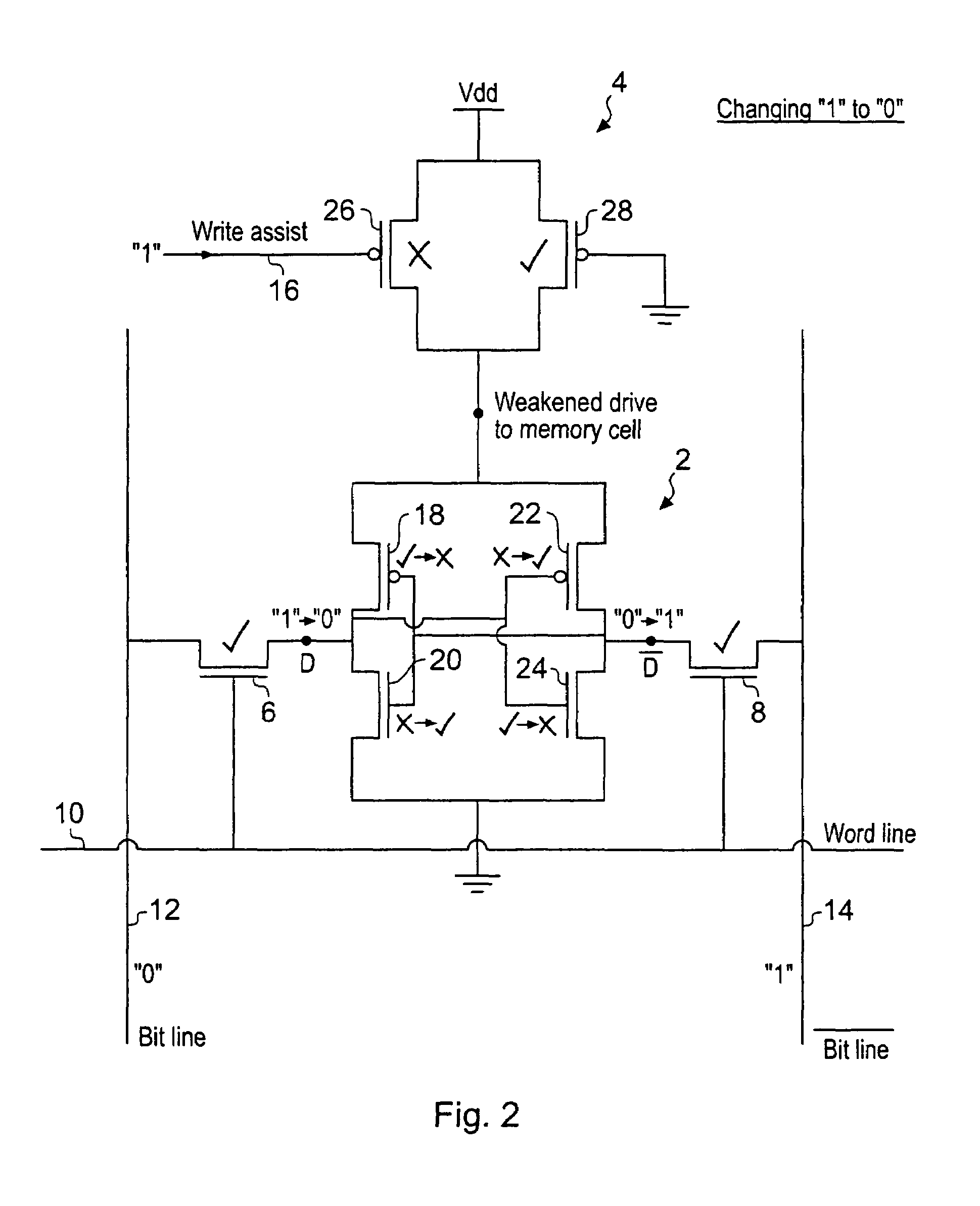Integrated circuit memory with write assist
a write assist and circuit memory technology, applied in the field of integrated circuit memory, can solve the problems of slow switching between these two power supplies, inability to quickly switch from writing a memory cell to and inability to quickly switch between writing a memory cell and reading that same memory cell. , to achieve the effect of convenient switching, effective weakening the power supply to the memory cell, and facilitating the writing of new data values
- Summary
- Abstract
- Description
- Claims
- Application Information
AI Technical Summary
Benefits of technology
Problems solved by technology
Method used
Image
Examples
Embodiment Construction
[0029]FIG. 1 illustrates a portion of an integrated circuit memory comprising a memory cell 2, a power supply control circuit 4, pass gates 6, 8, a word line 10, bit lines 12, 14 and a write assist line 16. The memory cell 2 comprises a pair of cross-coupled inverters formed by transistors 18, 20, 22 and 24. The power supply control circuit 4 comprises a first gate 26. The first gate 26 is switched by the write assist signal on the write assist signal line 16 to be conductive when the memory cell 2 is not being written and to be non-conductive when the memory cell 2 is being written. A second gate 28 is permanently conductive and provides power to the memory cell 2 both when the memory cell 2 is being written and when the memory cell 2 is not being written.
[0030]The first gate 26 is a physically larger gate than the second gate 28 and accordingly provides a low(er) resistance path between the power supply Vdd and the memory cell 2. The second gate 28 is physically smaller and is onl...
PUM
 Login to View More
Login to View More Abstract
Description
Claims
Application Information
 Login to View More
Login to View More - R&D
- Intellectual Property
- Life Sciences
- Materials
- Tech Scout
- Unparalleled Data Quality
- Higher Quality Content
- 60% Fewer Hallucinations
Browse by: Latest US Patents, China's latest patents, Technical Efficacy Thesaurus, Application Domain, Technology Topic, Popular Technical Reports.
© 2025 PatSnap. All rights reserved.Legal|Privacy policy|Modern Slavery Act Transparency Statement|Sitemap|About US| Contact US: help@patsnap.com



